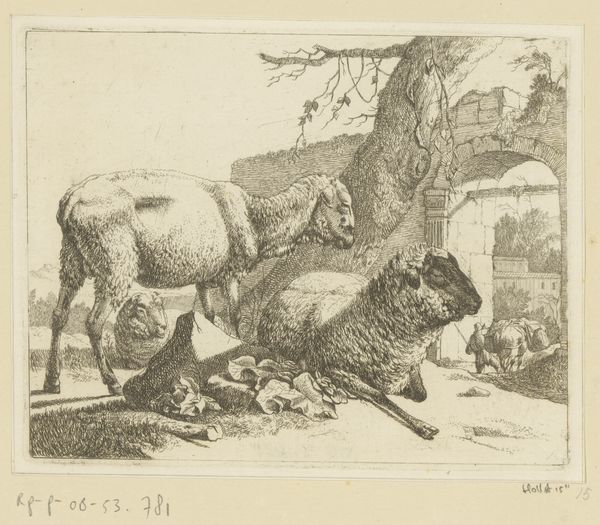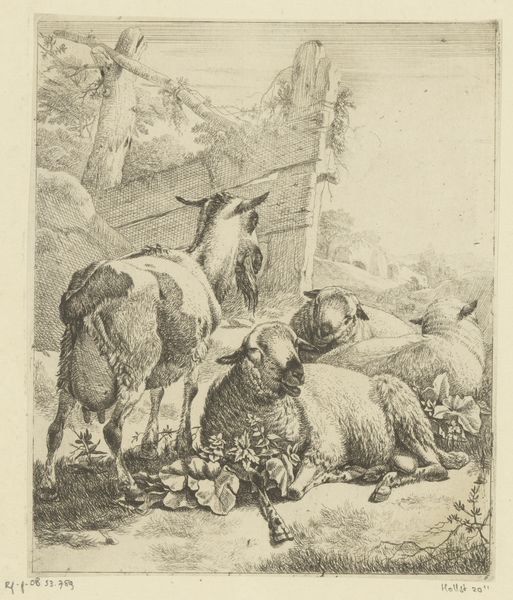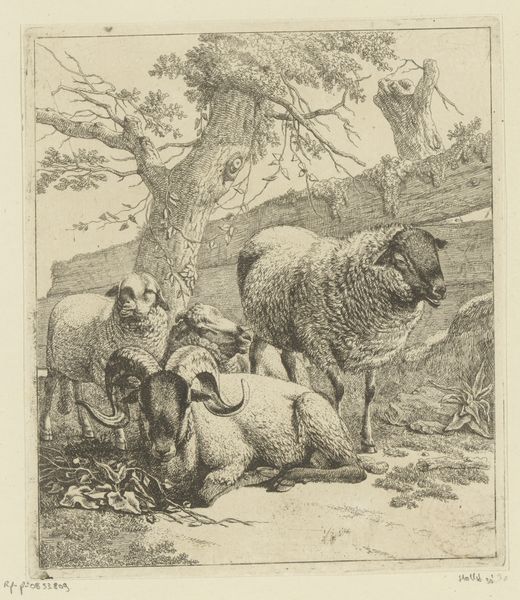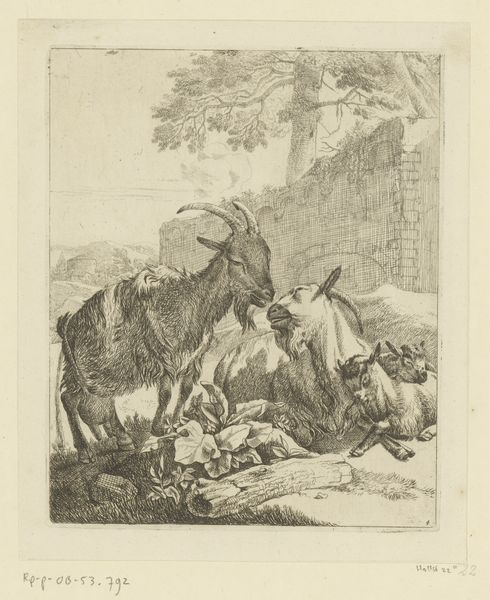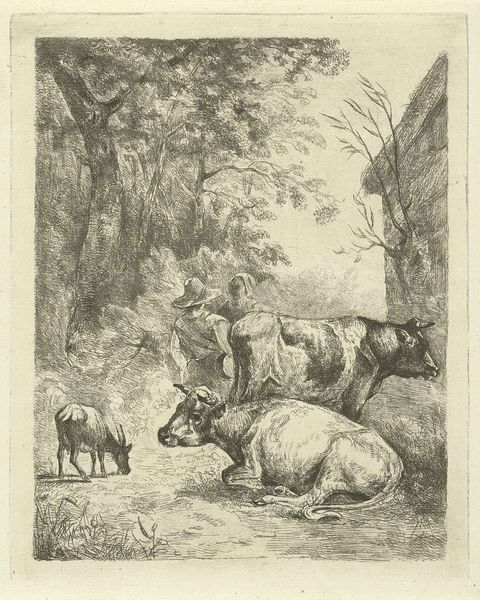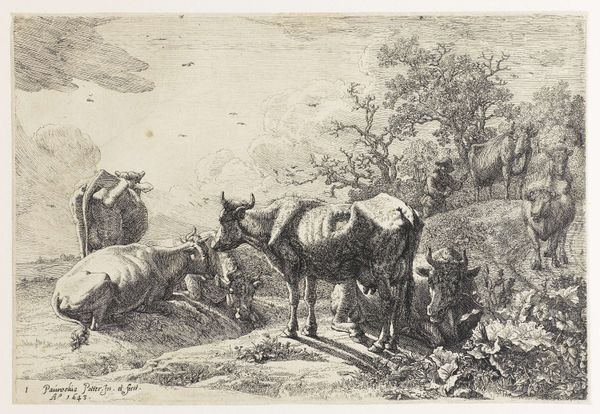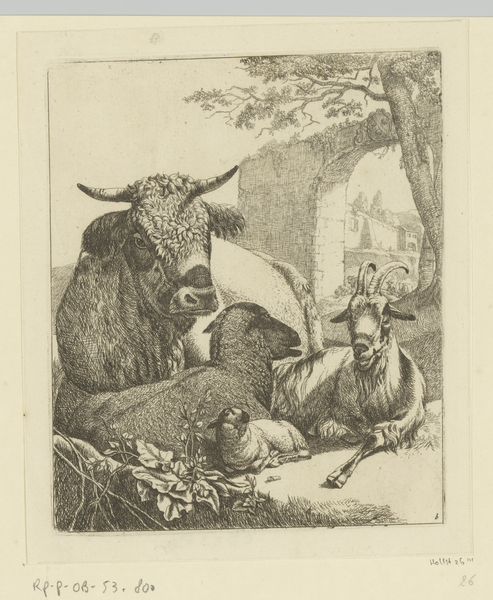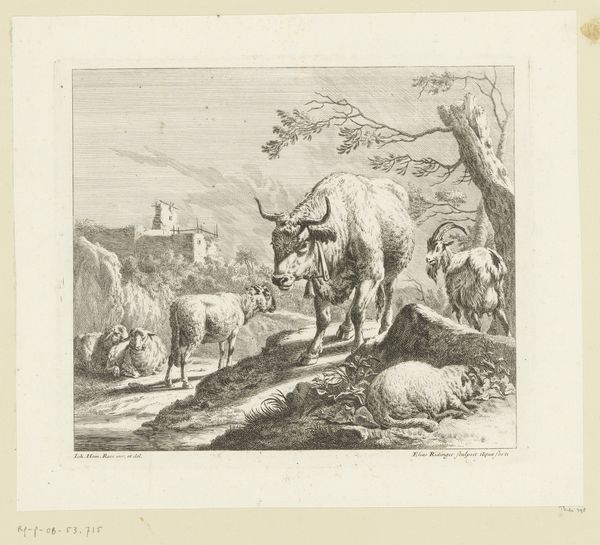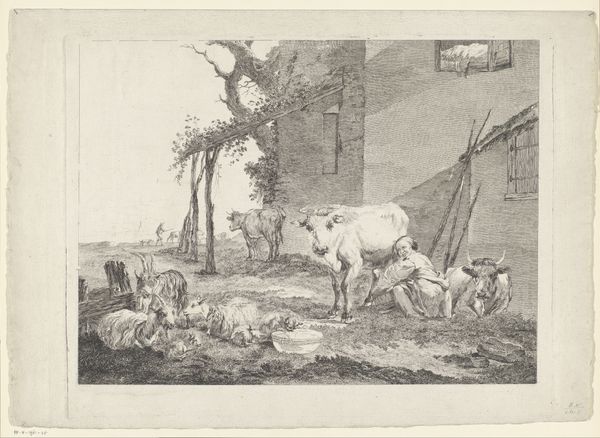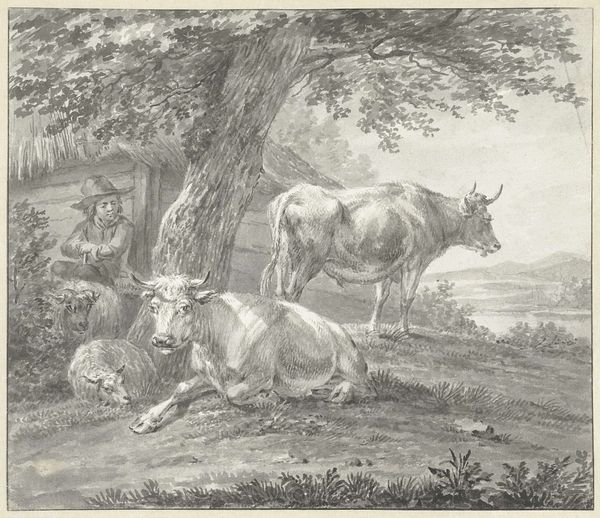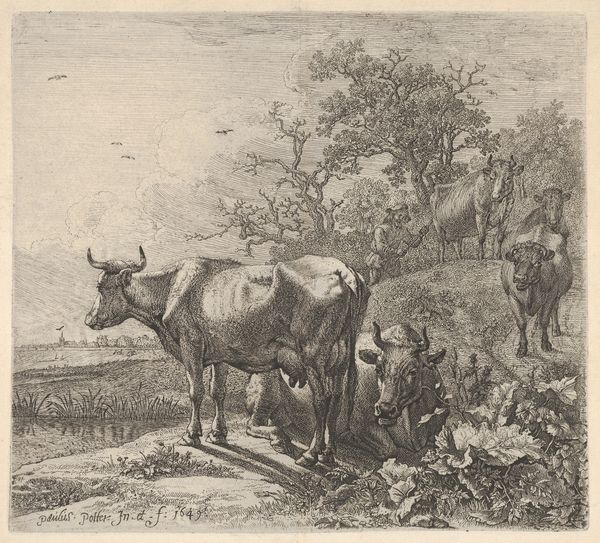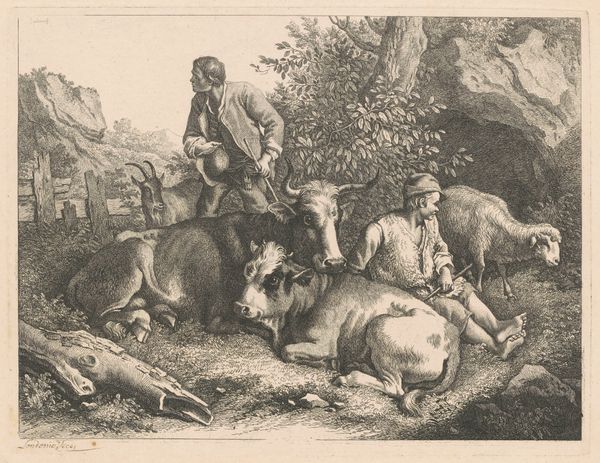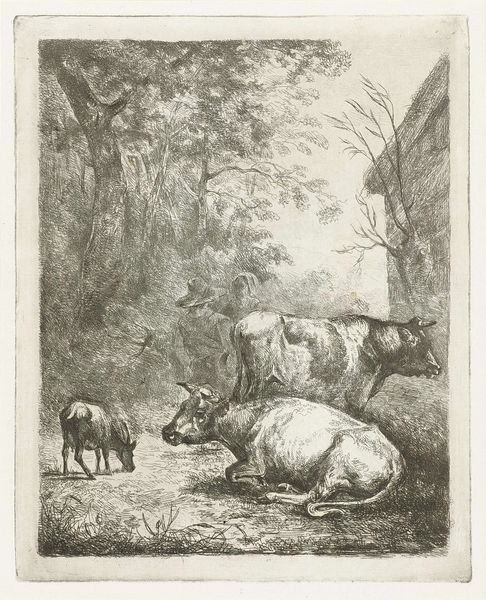
Liggende ezel met jong en staande geit voor een muur c. 1668 - 1670
0:00
0:00
johannheinrichroos
Rijksmuseum
drawing, print, etching
#
drawing
#
baroque
#
animal
# print
#
etching
#
old engraving style
#
landscape
Dimensions: height 194 mm, width 167 mm
Copyright: Rijks Museum: Open Domain
Editor: Here we have "Liggende ezel met jong en staande geit voor een muur," which translates to "Lying Donkey with Young and Standing Goat in Front of a Wall." Johann Heinrich Roos created this etching around 1668 to 1670. What’s your initial impression? Curator: A pastoral scene imbued with quietude, wouldn’t you agree? The delicate network of lines, the tonality... Roos employs a clear visual hierarchy: The standing goat's erect posture is immediately juxtaposed with the languid horizontality of the reclining donkeys. Editor: Indeed. The printmaking process itself—the labor of carving and inking the plate—mimics the rhythms of rural life. Notice how the hatching defines the textures – the rough fur of the goat versus the smoother coat of the donkeys. The act of creation honors their being. Curator: Consider the goat, elevated against that stark wall, possibly a symbolic ruin? Roos expertly captures the angularity of the animal’s pose; its gaze projects outward, establishing a certain compositional tension. Editor: It’s compelling to imagine the life of the artisan—Roos, bent over his tools, rendering this scene in painstaking detail. This was both observation and interpretation; not just a representation, but an act of engagement with labor and landscape. Were the animals posed? Was he portraying animals commonly employed at the time? The scene appears so carefully set. Curator: Yet the seeming casualness is itself carefully crafted, a baroque sensibility perhaps? The artist deliberately employs light and shadow to guide the viewer’s gaze. A balance between naturalistic depiction and artful arrangement of elements in the composition. The way the figures interact spatially is significant; each plays a role in constructing a self-contained narrative. Editor: I think you are correct; the way each animal exists to elevate the other is fascinating, and it's something I hadn't previously considered when looking at this etching. The details within, down to the method used to create this work, create the sense of awe. Curator: Precisely. The careful modulation of lines, the thoughtful arrangement of light and shadow... The composition operates as a finely tuned machine designed to evoke both visual pleasure and intellectual consideration. Editor: Analyzing this piece through the lens of artistic process helps reveal Roos’ reverence for the everyday life of the animals.
Comments
No comments
Be the first to comment and join the conversation on the ultimate creative platform.
